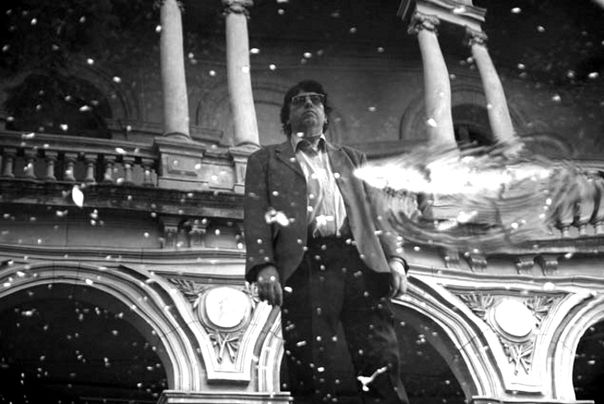First the movies, then life
Griselda Soriano of the Talent Press Buenos Aires 2011 finds Federico Veiroj's THE USEFUL LIFE, much like its cineastic protagonist, split right down the middle between cinema and real life.

THE USEFUL LIFE.
THE USEFUL LIFE pays tribute to an endangered class of cinephilia, that is born and raised at the heart of film archives and film societies, among narrow seats and 35mm prints from remote cinemas. But, contrary to what one would expect, this second film by Federico Veiroj is not an eulogy in the face of the (alleged) death of cinema, but rather a strong pledge – cinephilic, what else – in favour of the power of image and sound.
Jorge (Uruguayan critic Jorge Jellinek) works in the Uruguayan Cinematheque. Anyone who has frequented these worlds will immediately recognize the character as a mirror image, though slightly deformed, of the individuals that dwell in the shadows of archives and projection booths. Not much is revealed about his life: just that he is 45, has been working at the Cinematheque for 25 years, lives with his parents, and does not know how to approach a woman who regularly comes to "his" quarters. However, the information is enough to understand that the character has no life beyond those aisles. In fact, the climate of the first part of the film is very oppressive, despite the tender feelings that such a universe can evoke in the participants of a festival.
The monotonous balance given by little rituals (trying out seats one by one, recording commercials that resemble calls for help) is broken by a central point that has been announced from the beginning: the Cinematheque is "not profitable", as one of the characters puts it. Due to lack of budget, support and viewers, Jorge loses his job. This destabilizing event for the character also splits the film structure and tone down the middle. The breakpoint, highlighted by a powerful musical sequence to Leo Masliah’s “Los caballos perdidos”, forces the character to make a radical change which, little by little, brings him closer to life. Together with Jorge, the second part of the movie finds more freedom and, almost imperceptibly, suggests its distance from realism.
The black and white photography is the first dividing element that becomes evident; the use of music is the next. What first appears to be an incidental accompaniment gradually becomes complement and counterpoint to the images, triggering new directions and leading into the character’s subjectivity. The introduction of the Uruguayan composer Eduardo Fabini’s work was a perfect choice. Given that Jorge may leave the universe of cinema, but cinema will never leave his life, the film is filled with numerous quotes and references that make up the soundtrack of a life where Jorge will gradually become a protagonist.
THE USEFUL LIFE is pure “film within a film”, and literally speaking, a film that deals with a different type of cinephilia, not the one that bathes in the glamour of celebrities and festivals, but in the recesses of a projection room. A homage to a world that discusses not only the events on screen but also the projectors, where an audience of five spectators can be worth as much or more than a full theatre. Nevertheless, as we mentioned above, there is no eulogy in this homage. THE USEFUL LIFE is, on the contrary, a statement in favour of freedom.
As for our dear Jorge, the collapse of his magical world, which has held him captive, forces him out to discover that, yes, there is a life beyond the movies! Better yet, films give him the best excuse to seduce a girl.


301 Moved Permanently